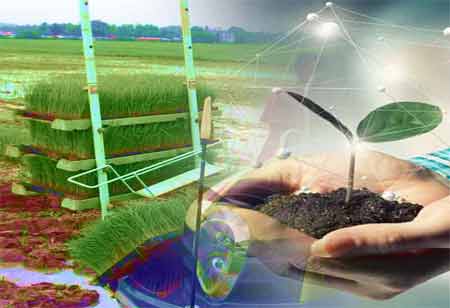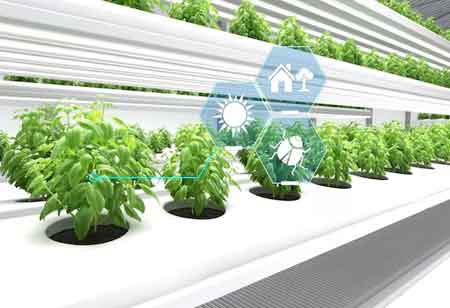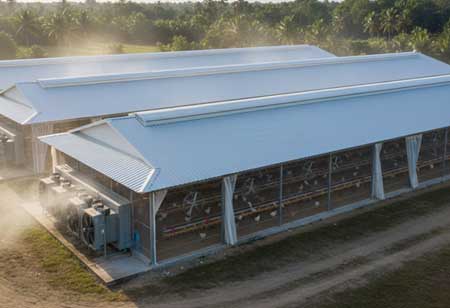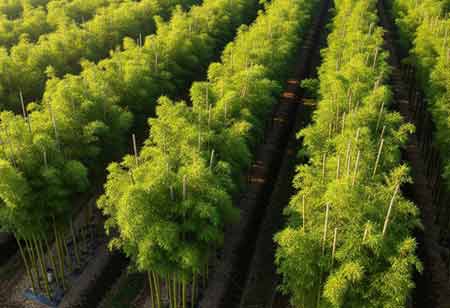Thank you for Subscribing to Agri Business Review Weekly Brief
Balancing Water Use through Recirculating Systems
Within the ever-changing aquaculture landscape, novel approaches that give equal weight to environmental sustainability and operational efficiency are giving rise to a revolutionary paradigm

By
Agri Business Review | Friday, February 02, 2024
Stay ahead of the industry with exclusive feature stories on the top companies, expert insights and the latest news delivered straight to your inbox. Subscribe today.
Aquaculture innovations focus on water-use balance with recirculating systems, utilising advanced technology to optimise water conservation, improve environmental sustainability, and enhance the efficiency of fish farming practices.
FREMONT, CA: Within the ever-changing aquaculture landscape, novel approaches that give equal weight to environmental sustainability and operational efficiency are giving rise to a revolutionary paradigm. Recirculating aquaculture systems (RAS), which aim to balance the delicate balance between water use and aquatic life cultivation, are at the forefront of this revolutionary movement. Through the incorporation of state-of-the-art technologies, RAS provides a healthy habitat for aquatic life and also drastically minimises water usage.
Understanding the RAS Advantage
Due to their need for continuous water exchange, traditional aquaculture systems frequently need help with disease control, water quality, and environmental impact. Recirculating aquaculture systems becomes a game-changer in this situation. With its effective internal water filtration and recirculation, this closed-loop system greatly lowers the need for fresh water.
Exploring Environmental Impact
Investigating the environmental effects of aquaculture methods as a responsible steward of the ecosystem is imperative. Water usage is minimised by design in RAS systems. By using less water, it can protect this valuable resource and lessen the contamination of the natural water sources. Conventional aquaculture frequently results in the discharge of nutrient-rich wastewater into rivers and seas, upsetting marine ecosystems. However, RAS significantly lessens this effect, helping to maintain aquatic biodiversity.
RAS Resolves Water Quality Conundrum
Recirculating aquaculture systems are made expressly to provide consistent and ideal water quality parameters, thereby creating an atmosphere that is conducive to the growth of aquatic life. Utilising biological treatment techniques and cutting-edge filtration technologies, RAS keeps water quality at levels that support fish and other aquatic creatures' growth and well-being. RAS stands out as a preferable alternative for sustainable aquaculture techniques because of its precision in managing water quality.
Recirculating aquaculture systems heavily rely on probiotics, the unsung heroes of aquaculture. They bring the system into a state of harmonious balance. Probiotics ensure that the water in RAS stays pure by decomposing organic matter, lowering ammonia and nitrate levels, and improving biological filtration overall. The magic happens in this symbiotic connection between probiotics and RAS. It demonstrates the dedication to sustainable aquaculture methods.
Space Optimisation for Maximum Productivity
In a world where space is becoming more limited, recirculating aquaculture systems emerge as a space-efficient alternative. Large areas of water are frequently needed for traditional aquaculture, which results in habitat degradation and conflicts with land use. RAS, on the other hand, is scalable and versatile since it can be installed in controlled situations, including cities. This spatial efficiency does not harm productivity. Year-round production made possible by RAS ensures a steady supply of premium seafood regardless of external weather conditions.
RAS Mastery in Disease Management
RAS considerably lowers the chance of illnesses harming aquatic life by its secluded and regulated habitat. The capacity to keep an eye on things and maintain ideal conditions guarantees that the stress levels of aquatic life are kept to a minimum, which strengthens their immunity. Furthermore, recirculating aquaculture systems constitute a barrier against illnesses due to their reduced exposure to outside pathogens, guaranteeing a stronger and healthier stock.
Recirculating systems have the potential to transform aquaculture methods and open the door to a more robust and affluent aquatic ecosystem as it moves toward a future in which sustainability is of utmost importance. Accepting these technologies demonstrates the shared commitment to preserving the delicate balance of water resources and sustaining a healthy aquatic ecosystem for future generations.





